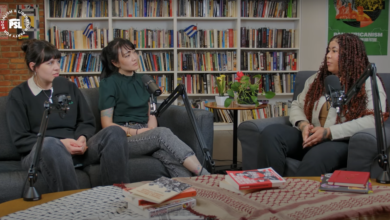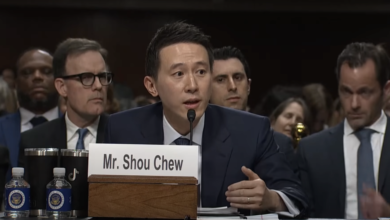This article was drafted by the Political Secretariat of the Alliance for Just and Lasting Peace in the Philippines-USA. The AJLPP is a member group of the U.S. anti-war ANSWER Coalition (Act Now to Stop War and End Racism).
On the 71st anniversary of the Armed Forces of the Philippines (AFP) last Dec. 21, 2006, President Arroyo announced the implementation of Oplan Bantay Laya II (Freedom Watch II). The counter-insurgency plan aims to destroy the revolutionary movement by 2010.
The Arroyo regime that has rabidly supported the Bush “global war on terror” intends to carry out Oplan Bantay Laya II
|
The U.S. government and the Arroyo regime has estimated that the all-out war policy against the armed revolutionary movement will unify the military and police forces behind her and weaken or destroy the revolutionary forces, especially the legal and open democratic forces that it presumes to be the most solid part of the broad united front of opposition forces.
Oplan Bantay Laya
As early as 1986, then-chief of staff General Fidel Ramos proposed a plan to President Aquino to “wipe out the legal democratic forces to paralyze the left.” He called it the “Djakarta Solution” after the Indonesian massacres of 1965. He estimated that “only 20 percent of the revolutionary movement will be left and the rest will be forced to go underground.” But Aquino, who was concerned with her popularity, did not approve the plan.
But the Cabinet Oversight Committee headed by Vietnam War Phoenix Program and Marcos fascist regime veteran General Eduardo Ermita—who was directly in charge of the first Oplan Bantay Laya—implemented some parts of the plan. They called it Oplan Jericho. In Central Luzon alone, more than 200 progressive elements of the open movement were killed from 1986-88.
Now, the same cabal led by Ermita plans to implement and oversee the dirty tactics carried out mainly by special operations teams for psywar and by death squads for extrajudicial killings.
Actually, they are rehashing the Oplan Katatagan under dictator Marcos from 1981-86 and Oplan Lambat Bitag under Aquino, Ramos and Estrada from 1987-99. Katatagan killed more than 600 people in one region alone.
Under Ramos, Estrada and Arroyo, the government waged a counter-insurgency war in Mindanao against the Moro National Liberation Front and the Moro Islamic Liberation Front using the full force of the AFP.
Oplan Bantay Laya has two ugly aspects. First, it concentrates military and police forces on a number of guerrilla fronts at every given time in order to perpetrate massacres, mass intimidation, arbitrary arrests, torture and forced evacuations of entire communities though bombings, artillery fire, machine gun fire, arson and bulldozing.
Second, it engages in the extrajudicial killing, abduction and torture of legal activists, including local progressive party leaders, workers, peasants, women, youth, religious leaders, journalists, lawyers and human rights advocates. They want to destroy or at least, intimidate the mass movement as they have done in El Salvador, Colombia and other Latin American countries.
Their tactics include dirty psywar operations that denounce the intended victims as communists and, after they are killed, blame the communists for killing them in a “purge.”
Contrary effects
So far, the Arroyo regime has been able to use brute force in harassing, hampering and breaking up the mass actions of the broad united front of opposition forces.
The government’s massive campaign of extrajudicial killings, abductions, torture, misrepresentation of children as New People’s Army fighters, and other gross human rights violations by the military and paramilitary forces of the regime have outraged the people of the world and the most respected institutions concerned with human rights.
It has come to the point that even friendly governments like Japan and many sectors in the U.S. government have told the Philippine government to take responsibility for and stop the gross human rights violations. Like the Marcos fascist regime, the repressive Arroyo regime is finding itself isolated not only among the Filipino people but also in the international community of nations
The U.S. plan for AFP ‘modernization’
In line with the U.S “war on terror” is the planned modernization of the Philippine armed forces. It is called the Philippine security upgrading program and “self-reliant modernization.”
The U.S. plan calls for two aims: One is the full mobilization of all army and police forces to end the insurgency war. At the same time, it wants to prepare the Philippine armed forces to fight its eastern neighbors—Vietnam and the People’s Republic of China—over the contested area of the Spratly islands. The United States is bent on using Philippine mercenary forces as cannon fodder in case of a regional crisis.
Aligned with the “Balikatan War exercises,” Washington has geared the training of the armed forces toward light, “mobile, efficient (especially equipped) and special trained special units” in fighting the threat of the NPA and the Islamic militants.
Many of the U.S.-R.P. war exercises are naval and combined arms in nature. They are more offensive than defensive in nature. The exercises typify the amphibious and naval assaults of islands and beaches that characterize Vietnam and Chinese coastal areas.
This can be proven by the deployment of a division of U.S.-AFP forces on the island of Sulu composed of three army, marines and special forces brigades. They have been operating there against the Abu Sayaff forces for the last six months.
The plan also calls for the building of two more army divisions (12 battalions) to be trained by U.S. special forces. This will increase the number of army divisions from 8 to 10 divisions. They plan to train at last 80,000 as “special forces” or “counter-guerilla forces” out of the present 200,000 AFP soldiers formed into 8 regular army divisions and 5 engineering brigades.
The naval preparedness training is a departure from the traditional U.S. strategy of training AFP forces on assaults against the NPA, the MNLF and the MILF base areas, suspected rebels lairs and fortified positions from 1985- 2003.
The “Sea, Air and Land” doctrine uses combined armed tactics like artillery bombardment, armored attacks and massive marine and army assaults. These brigade- and division-size operations are supported by air cover that was a trademark of Joint U.S. Military Assistance Group training since the late 1980s until the JUSMAG was dissolved and replaced by the Visiting Forces Agreement in 1998.
Increased U.S. military aid
The Philippines will also receive $148 million in military equipment, making it the number one recipient in Asia of excess defense articles. This amount includes $70 million from the U.S. government for training military forces in 2004-06.
But the Philippine government will receive far less now than it has received since 1987. During the Aquino regime, it
|
Its air force is all air and has no force. Its armed helicopters number less than 60. It received more than 100 from the United States in 1987.
Its navy is also dismal with one frigate and 58 patrol crafts. And yet military spending is four percent of the Philippine national budget.
The U.S. government is determined to keep the Philippine military dependent on its military supplies and training. Boasting of high-tech weapons, it handles all of these materials in intelligence gathering and uses a small elite Filipino force under its tutelage and control.
Thus, to economize force, the United States and the Philippine governments will field 40,000 police and 40,000 paramilitary forces to augment the 130,000 army soldiers who are now bearing the brunt of fighting the NPA, the MILF and other resistance forces.
What kind of modernization can we expect from this situation?
A military failure
Oplan Bantay Laya I has failed in its objective of destroying the NPA by concentrating military and mobile police units on a number of regions and a number of guerrilla fronts.
In no region has the enemy succeeded in destroying the NPA—the armed forces of the Communist Party of the Philippines. The military and mobile police forces simply do not have the military strength to cover and control effectively 10 percent of the population at any given time.
In fact, the AFP itself admitted that the NPA has successfully conducted more than 400 tactical offensives on the island of Mindanao alone during 2006. The AFP also admitted that the NPA confiscated a large number of weapons from the AFP. In some instances, this happened without firing a shot.
The AFP can concentrate on a few guerrilla fronts and make life difficult for the people. But the NPA units can evade them in every guerrilla front or shift to another area for guerrilla front development.
In scores of other guerrilla fronts, the NPA operates freely because of the over concentration of enemy forces on a few guerrilla fronts elsewhere.
The enemy forces are frustrated due to deadly blows from the NPA in ambushes and raids. The AFP often blindly carries out patrols and other operations without any definite target. The AFP soldiers often find themselves vulnerable to sniping teams of the NPA and militia units, to RPG fire and to command-detonated land mines.
The AFP boasts of amplifying its force by arming the local people as CAFGU, CVO, barangay tanods and the like. But, in fact, the AFP distrusts the people. It prefers to concentrate its efforts on trying to intimidate the people through humiliation, resident certificates checks, food blockades and other terrible human rights violations, including massacres, illegal detentions, torture, arson and forced evacuations. The AFP knows that those who agree to receive arms from the AFP are ultimately vulnerable to the NPA’s disarming operations.
In the end, the U.S.-Arroyo regime’s scheme to destroy the people’s democratic revolution before 2010 is a mere pipedream.
Not even the Marcos fascist dictatorship, which received plenty of U.S. military assistance in exchange for allowing U.S. military bases to stay, could not destroy the people’s army that was then far smaller than its current size. And Marcos had a far bigger allowance for official concessional borrowings from abroad, which rapidly increased the AFP’s troop strength.
Not even the U.S.-Aquino regime could destroy the people’s army. Likewise, Oplan Bantay Laya has run for five years and failed to destroy the armed revolutionary movement.
In the final analysis, the people united can never be defeated. Victory belongs to the Filipino people!







